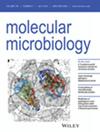The Plasmodium GRASP Homolog Modulates Liver Stage Development, Subsequent Blood Infection and Virulence in Mice
IF 2.6
2区 生物学
Q3 BIOCHEMISTRY & MOLECULAR BIOLOGY
引用次数: 0
Abstract
Conserved across eukaryotic cells, Golgi reassembly and stacking proteins (GRASPs) are peripheral proteins that hold the flat cisternal membranes of the Golgi apparatus into stacks and that also play a role in a process of unconventional protein secretion involving the autophagy machinery. The Golgi in Plasmodium malaria parasites is composed of unstacked cisternae that contain a single GRASP homolog. We previously showed that the initial development of Plasmodium berghei in hepatocytes involves the clearance of micronemes through their sequestration into PbATG8-positive autophagosomes that fuse with the parasite plasma membrane. Here, we examine the involvement of PbGRASP in microneme elimination and extend our studies to assess the importance of GRASP for parasite development in the mammalian host and mosquito vector. GRASP associates with PbATG8 autophagosomes containing micronemes, though PbGRASP-KO parasites can expel micronemes. PbGRASP-KO parasites have no discernable phenotype during mosquito stage development or asexual blood stage growth. PbGRASP-KO liver stages form small schizonts at mid-infection, and then growth resumes. PbGRASP-KO hepatic merozoites egress from the mouse liver and induce higher parasitemia but display delayed and reduced cerebral malaria symptoms. These observations point to a regulatory role for GRASP in controlling parasite proliferation and virulence in mammalian hosts.

GRASP疟原虫同源物调节小鼠肝脏期发育、随后的血液感染和毒力
高尔基重组和堆叠蛋白(GRASPs)是一种在真核细胞中保守的外周蛋白,它能将高尔基体平坦的池膜堆叠起来,并在涉及自噬机制的非常规蛋白质分泌过程中发挥作用。疟疾疟原虫中的高尔基体由含有单个GRASP同源物的未堆叠池组成。我们之前的研究表明,伯氏疟原虫在肝细胞中的初始发育涉及微素的清除,通过将微素隔离到与寄生虫质膜融合的pbatg8阳性自噬体中。在这里,我们研究了PbGRASP在微素消除中的作用,并扩展了我们的研究,以评估GRASP在哺乳动物宿主和蚊子载体中寄生虫发育的重要性。尽管pbgrip - ko寄生虫可以排出微素,但GRASP与含有微素的PbATG8自噬体相关。pbgrip - ko寄生虫在蚊子期发育或无性血期生长期间没有可识别的表型。pbgrip - ko肝分期在感染中期形成小分裂,然后恢复生长。PbGRASP-KO肝分裂子从小鼠肝脏排出并诱导较高的寄生虫血症,但表现出延迟和减轻的脑疟疾症状。这些观察结果表明,GRASP在控制哺乳动物宿主体内寄生虫增殖和毒力方面具有调节作用。
本文章由计算机程序翻译,如有差异,请以英文原文为准。
求助全文
约1分钟内获得全文
求助全文
来源期刊

Molecular Microbiology
生物-生化与分子生物学
CiteScore
7.20
自引率
5.60%
发文量
132
审稿时长
1.7 months
期刊介绍:
Molecular Microbiology, the leading primary journal in the microbial sciences, publishes molecular studies of Bacteria, Archaea, eukaryotic microorganisms, and their viruses.
Research papers should lead to a deeper understanding of the molecular principles underlying basic physiological processes or mechanisms. Appropriate topics include gene expression and regulation, pathogenicity and virulence, physiology and metabolism, synthesis of macromolecules (proteins, nucleic acids, lipids, polysaccharides, etc), cell biology and subcellular organization, membrane biogenesis and function, traffic and transport, cell-cell communication and signalling pathways, evolution and gene transfer. Articles focused on host responses (cellular or immunological) to pathogens or on microbial ecology should be directed to our sister journals Cellular Microbiology and Environmental Microbiology, respectively.
 求助内容:
求助内容: 应助结果提醒方式:
应助结果提醒方式:


